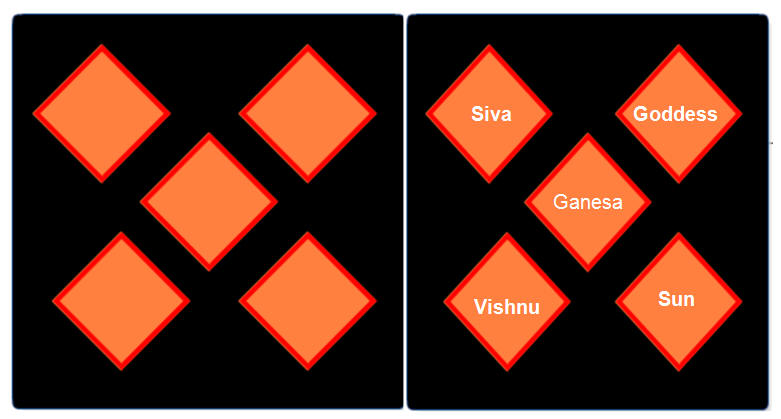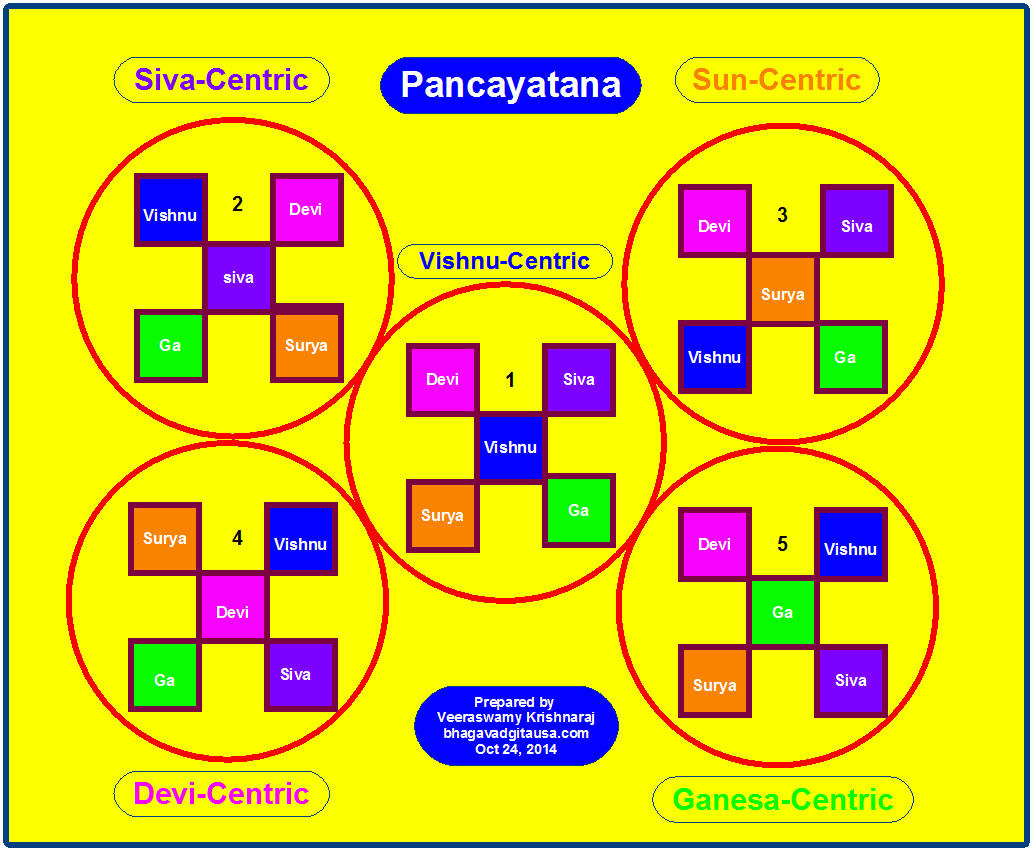By Periyava
Translation by V. Krishnaraj
http://www.kamakoti.org/tamil/part1kural52.htm
பூஜை : தெய்வத்தின் குரல் (முதல் பகுதி)
Worship: Deivathin Kural (Part One)
In every family, Īśvara Pūjai should take place.
The prosperous families can do extensive Pūjās. Others can do the short ones: 10 minutes. The office workers should perform the short ones. There should be sound of puja bell heard in all families.
We should have Murthy Pūja for five deities: Īśvara, Ambal, Vishnu, Vināyakar and the Sun. This goes by the name, Pañcāyatana Pūjai. These Mūrthys are not idols endowed with body parts. They are naturally occurring materials brought to life by Āvāhana (infusion of life into the idol or object). Offering worship to them is the tradition.
Siva-specific Bāṇa Liñga is in the Omkara Kuṇdam in Narmada River. Ambika’s Svarṇamukhi Silā is a stone with a golden streak obtained from Svarṇamukhi River in Andhra Pradesh. The Vishnu stone called Sālagrāma is in the Gaṇdaki River in Nepal. Sun Crystal is obtained in Vallam near Tanjore. Vinayaka’s Sōṇabhadra stone is obtained from the Sōṇā River merging with Ganges River. If you place these five stones at one place, it is like getting the whole nation together in one place.


None of these five stones has eye, nose, or ear. Therefore, the nooks do not gather dirt. It does not take time to do Abhiṣēkam (ritual ablution) and wiping them dry. They are small stones and take a small space. They need no big Puja Mandapam. A small round metal casket (Campuṭam = சம்பூடம்) should be sufficient. Performing Āvāhaṇam, bathing the stones with four teaspoons of water, Archana and food offering are done with sandalwood paste, Kumkum, and Aṭcatai (Rice with saffron or turmeric).
When we are away from home, there is no trouble doing the Puja for ten minutes. We need not worry about getting the flowers for the Puja. It is enough to carry dry leaves of Vilvam and Tulasi (Bael and Sacred Basil) with which we can perform Archana of Siva and Vishnu. We can use aṭcatai (rice with saffron or turmeric) for the Archana. We can perform Naivēttiyam with raisins.
We can put Tulasi, Bael, raisins, the colored rice in a small box that contains the stones of all five deities.
This is the Pañcāyatana Puja. This practice has been in vogue in our country from antiquity. Sankara made these ritualistic rules and tools shine with the new Jivan. He established the six religions with adding Subramaniya Upāsanam or worship. With the above-said pentad, we can add the spear-bearing Kumara Swamy for worship.
Puja does not demand too much time and trouble. With the mind willing, all wherever they are, can do the puja.
When staying home, Mahā Naivēttiyam or Great offering of food to the deity is important.
Īśvara for our use and experience gave us the whole world. He created many external objects outside of ourselves and the organs in us and for us to experience them. Whatever we experience, we must dedicate them to him before we experience them. Do we really serve the food to God? We just show the food to him in a superficial sense. Later, we eat the food, (he provided for us).
Some say slyly Swamy does not eat Naivēttiyam served to him. Nivētaṉam does not mean making Swamy to eat the food. He need not have to eat food. Puja is to cleanse our thinking and does not serve any purpose to God. Nivētayāmy means ‘letting you know’ and not ‘feeding you.’ O my father, because of your mercy, you gave us this food.’ Telling him this, we should eat with the thought of Swamy in our mind. If it is not for his grace, how could the rice grow? The rice experts researching the many types of rice can write big books. Can he manufacture one grain of rice? Though synthetic rice is made possible, the chemicals that go to make the synthetic rice were already created by Swamy. All that were created and developed by man, all were creations of Swamy at the end. If we experience what Swamy gave us without showing to him, we are only thieves.
The omnipresent Swamy will appear before us at any place where we can apprehend him. Identifying and calling him in the images of stone, mud, copper…he will respond to our call. He has the fitness and mercy. If he is not, we don’t ever need him.
We should let him know every day we use what he gives us. Doing this every day, we should use nothing other than what we dedicate to him every day as Nivētaṉam. That attitude comes to us as we mature and we become virtuous people.
(Chapter 5 Puja) Hex={22,8B,22}